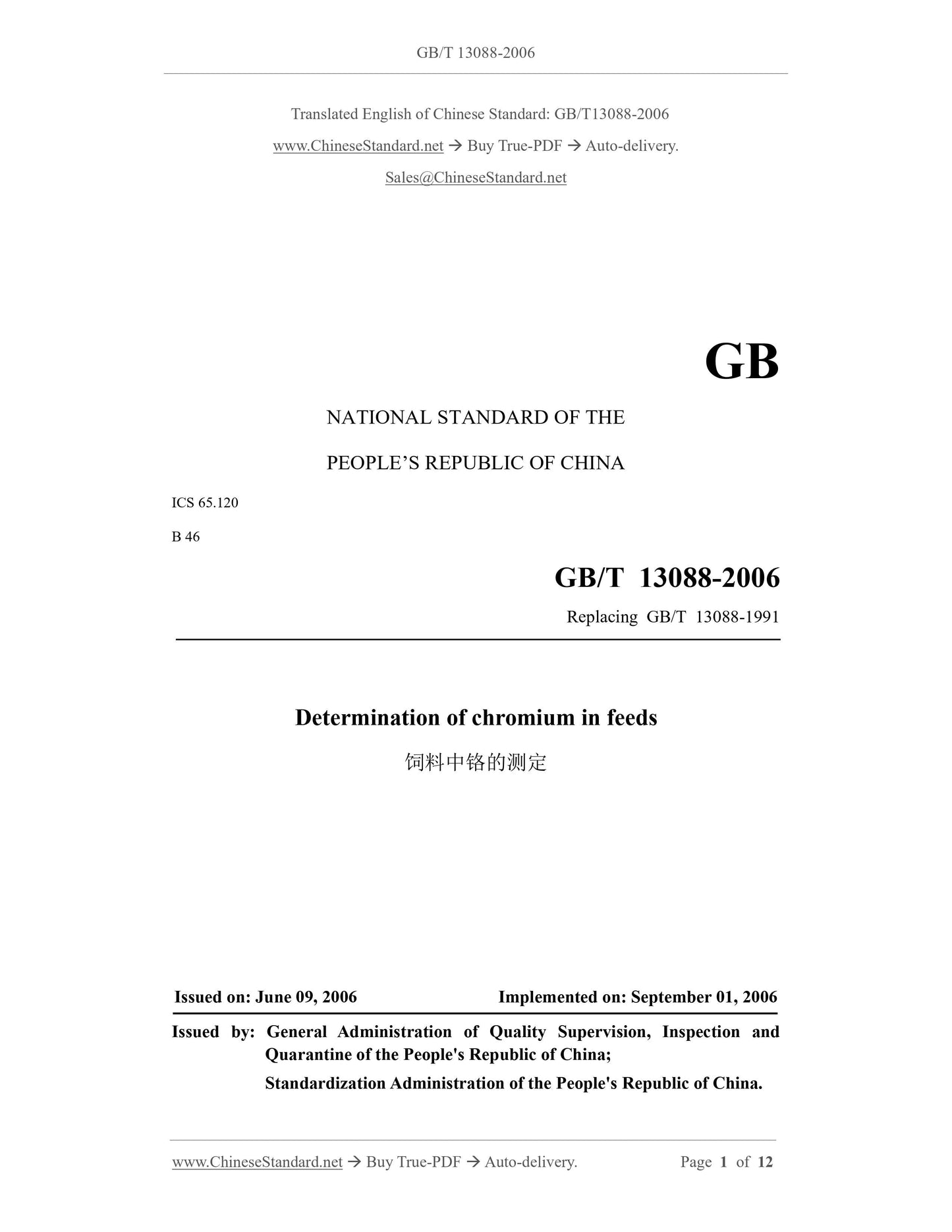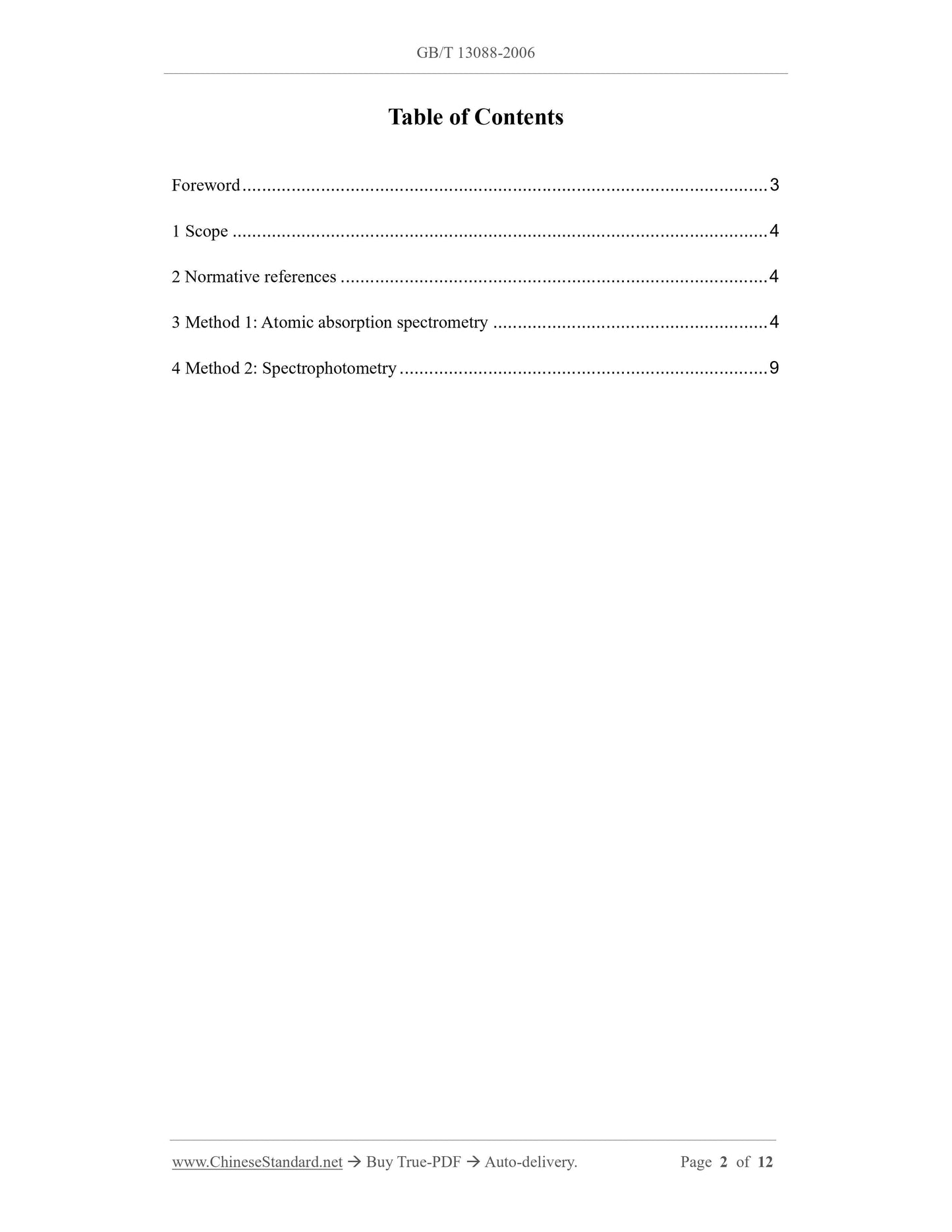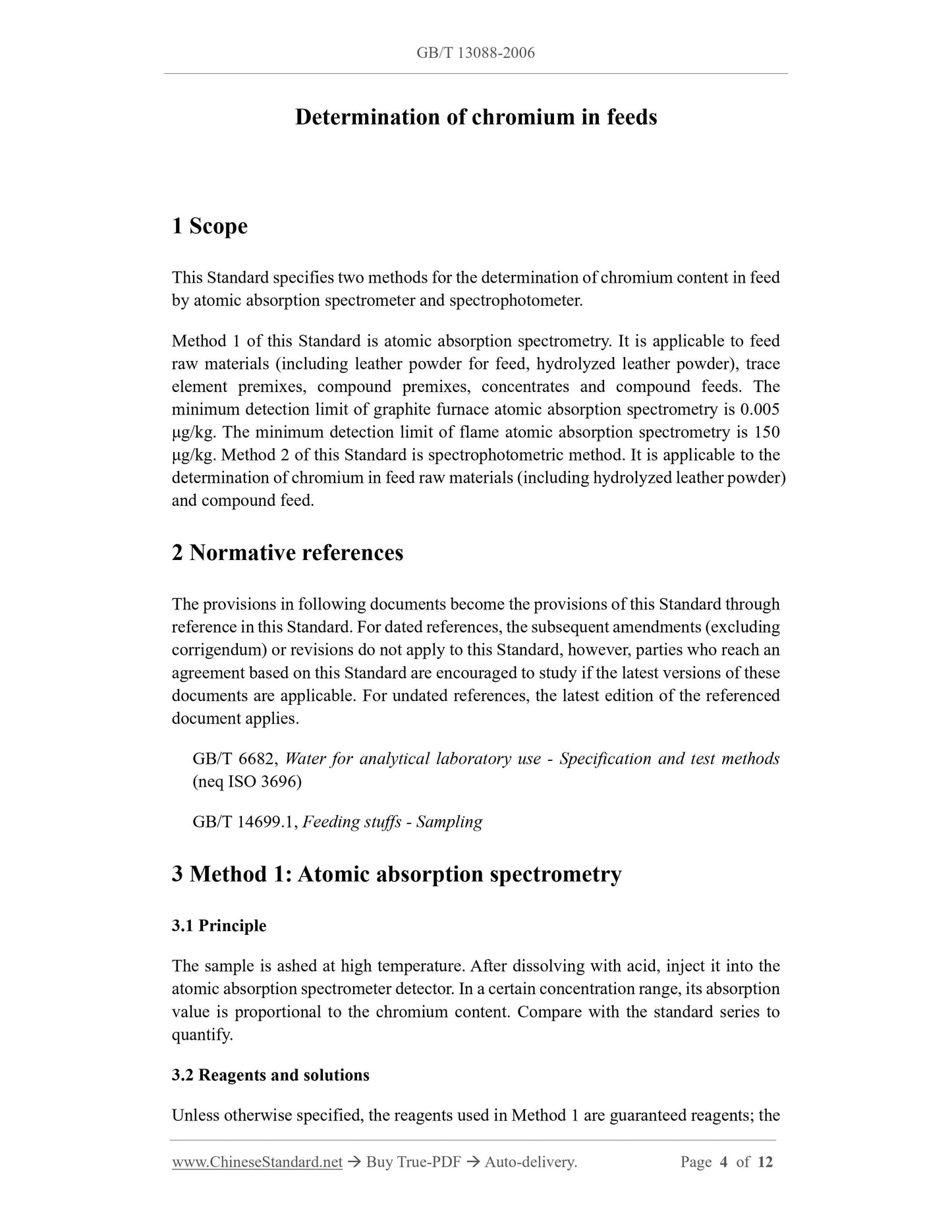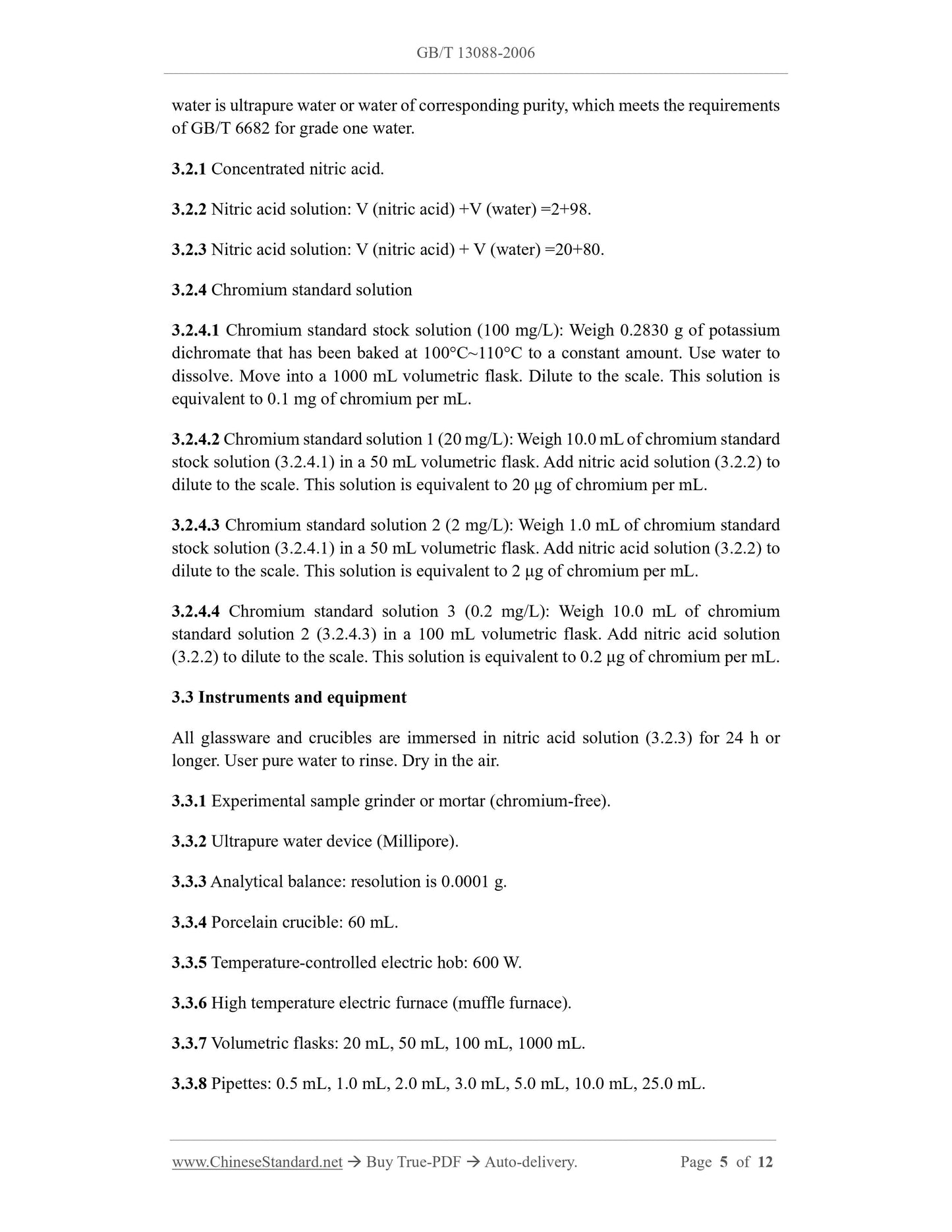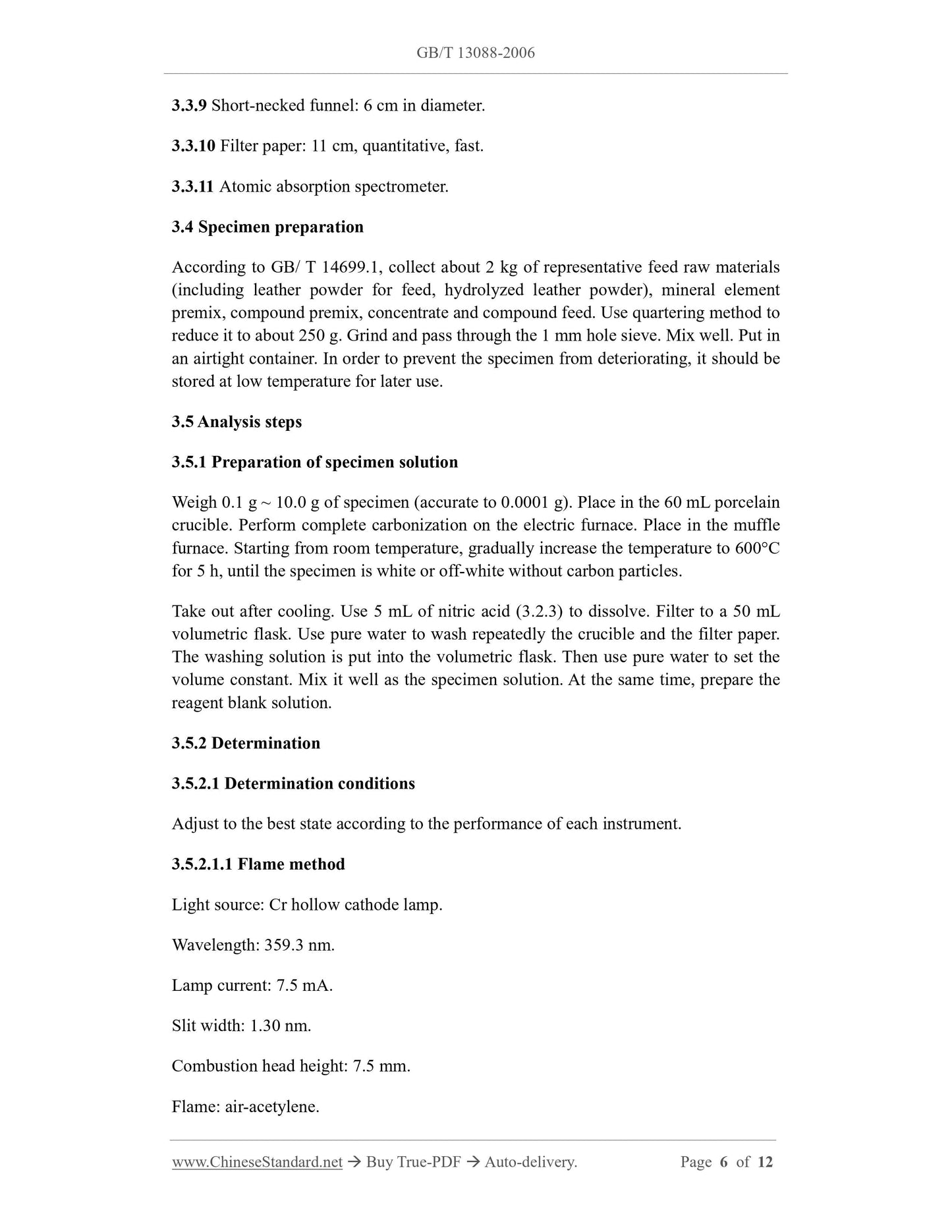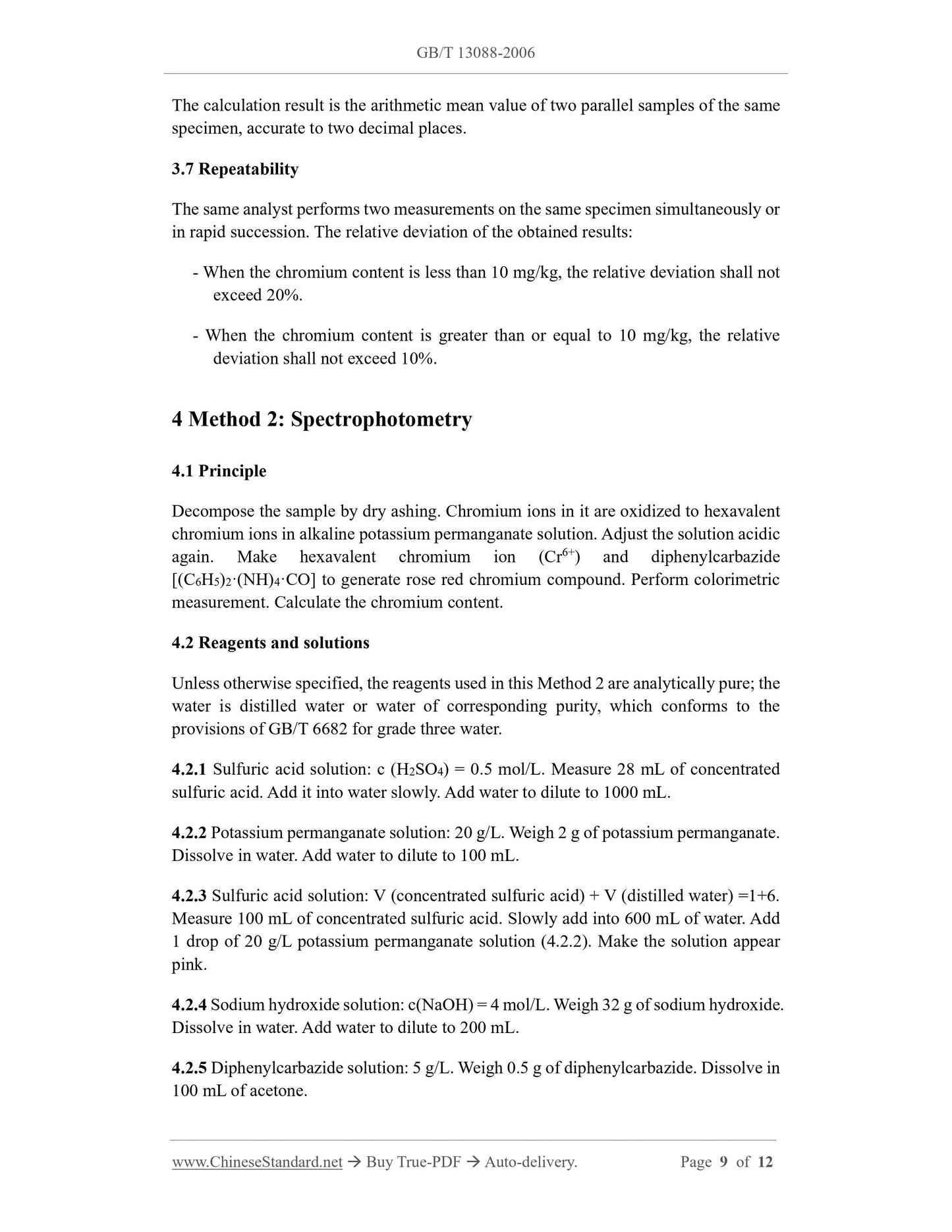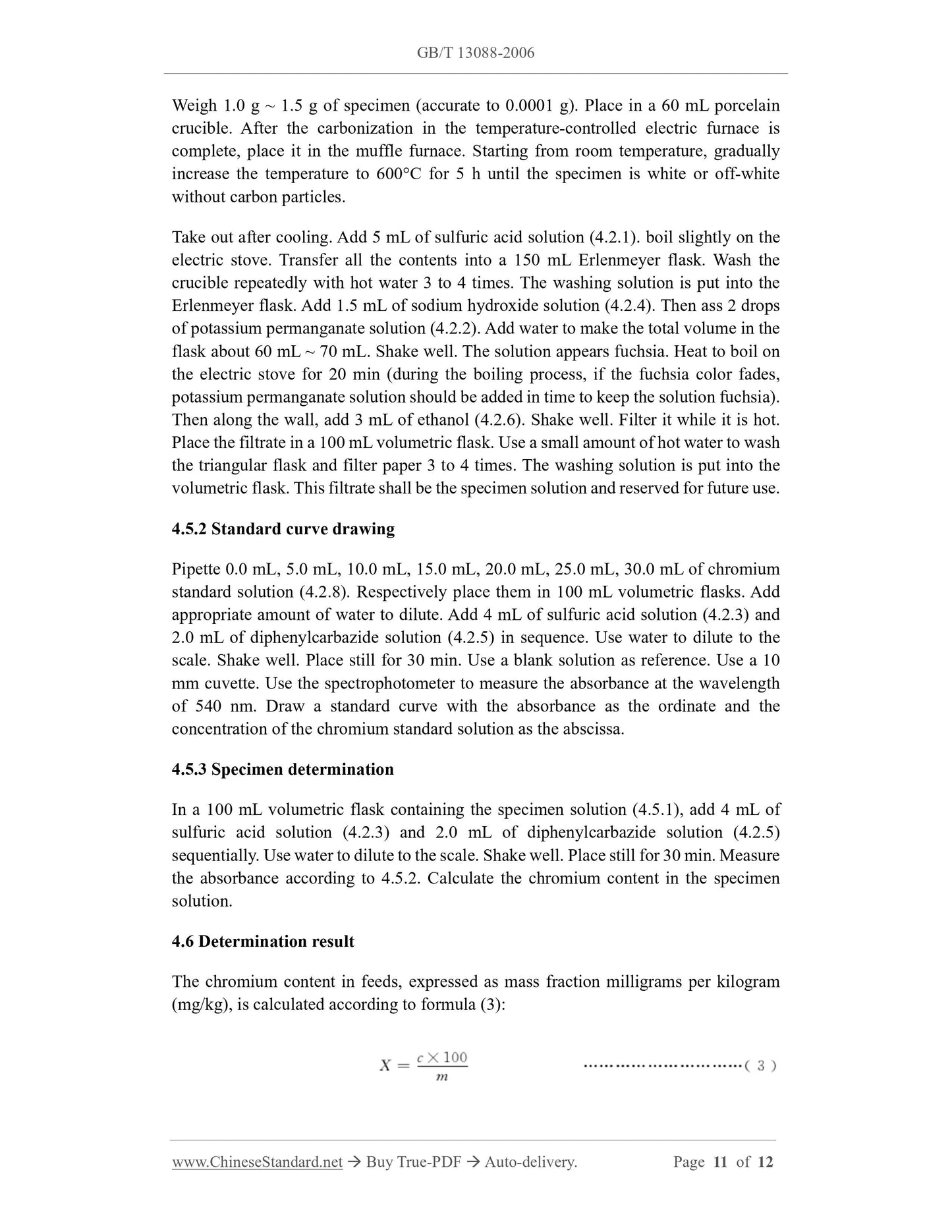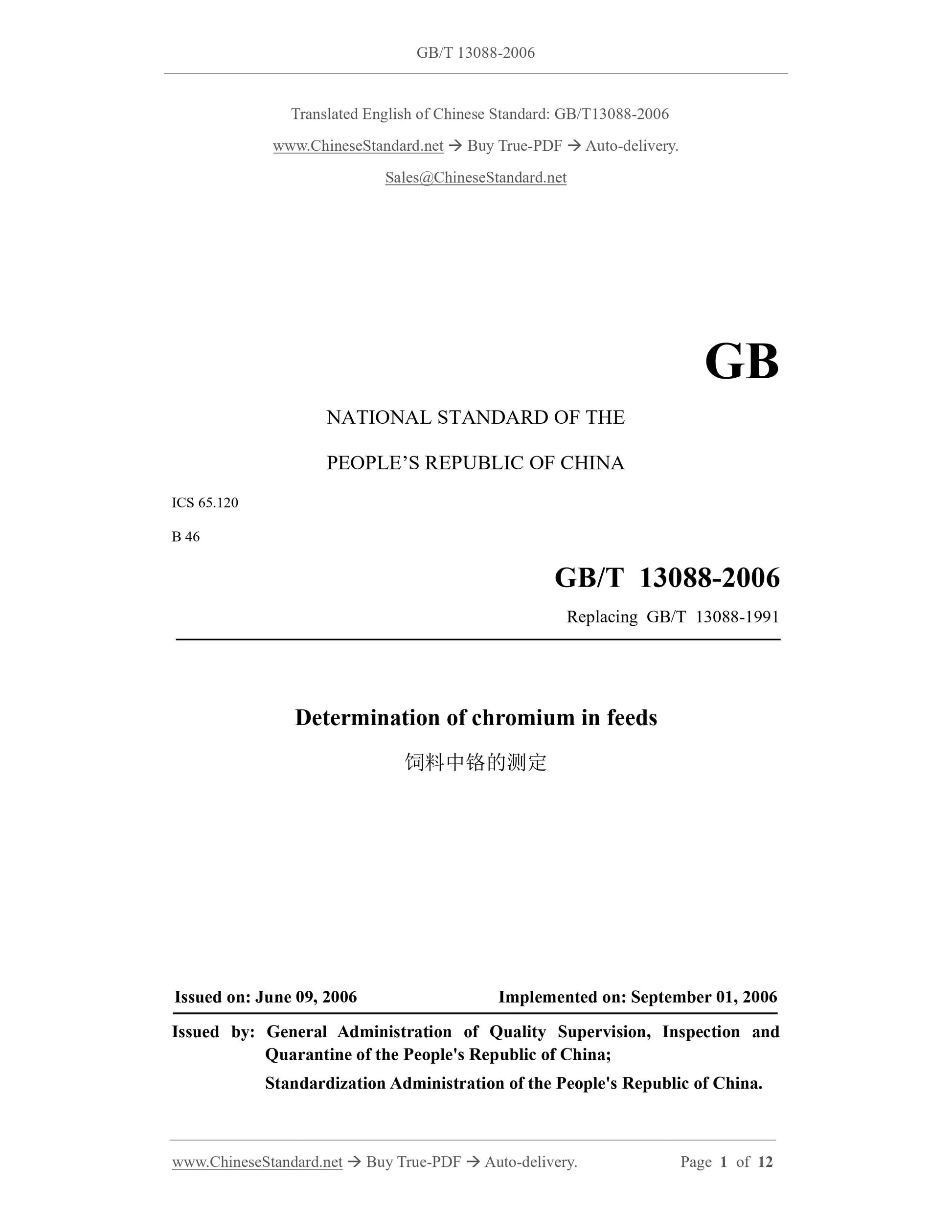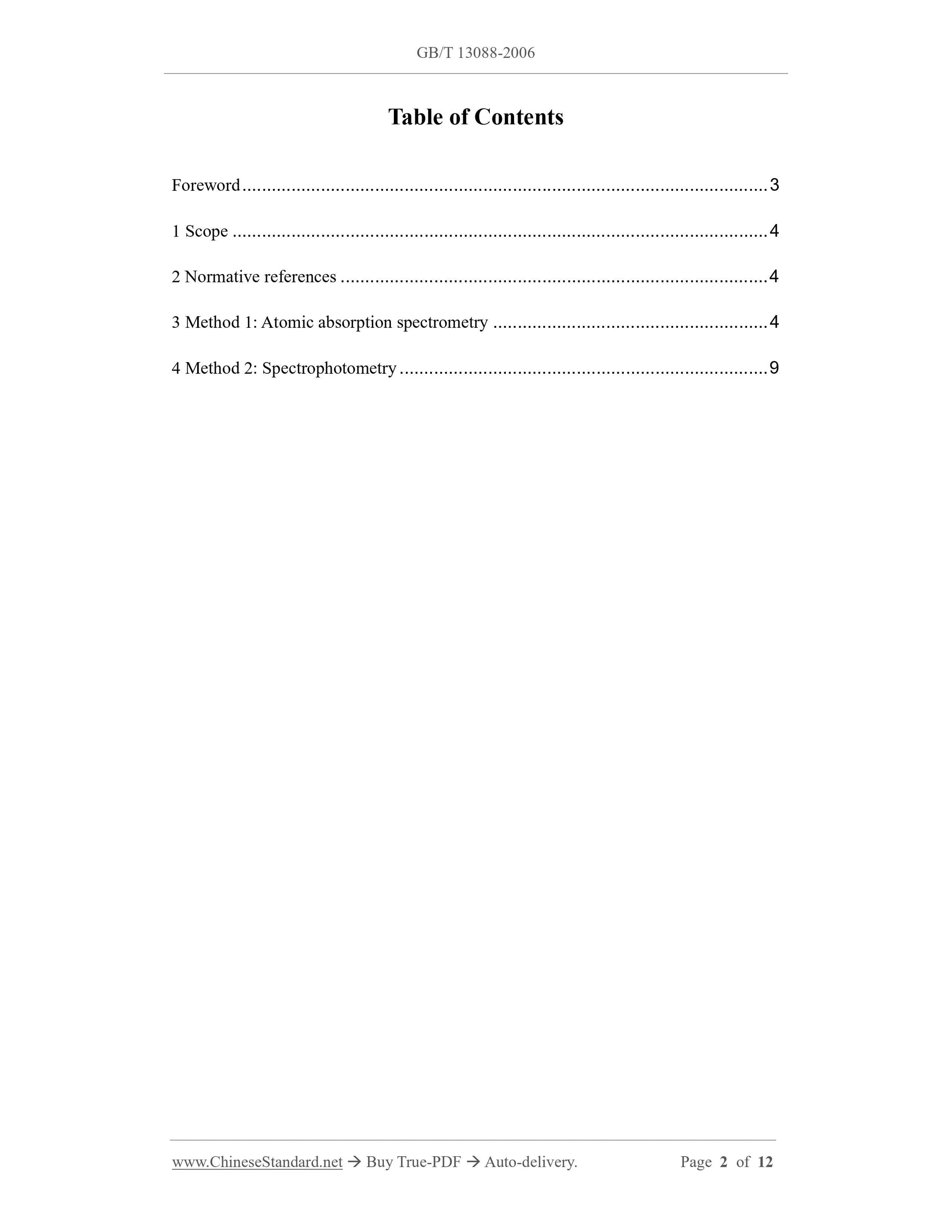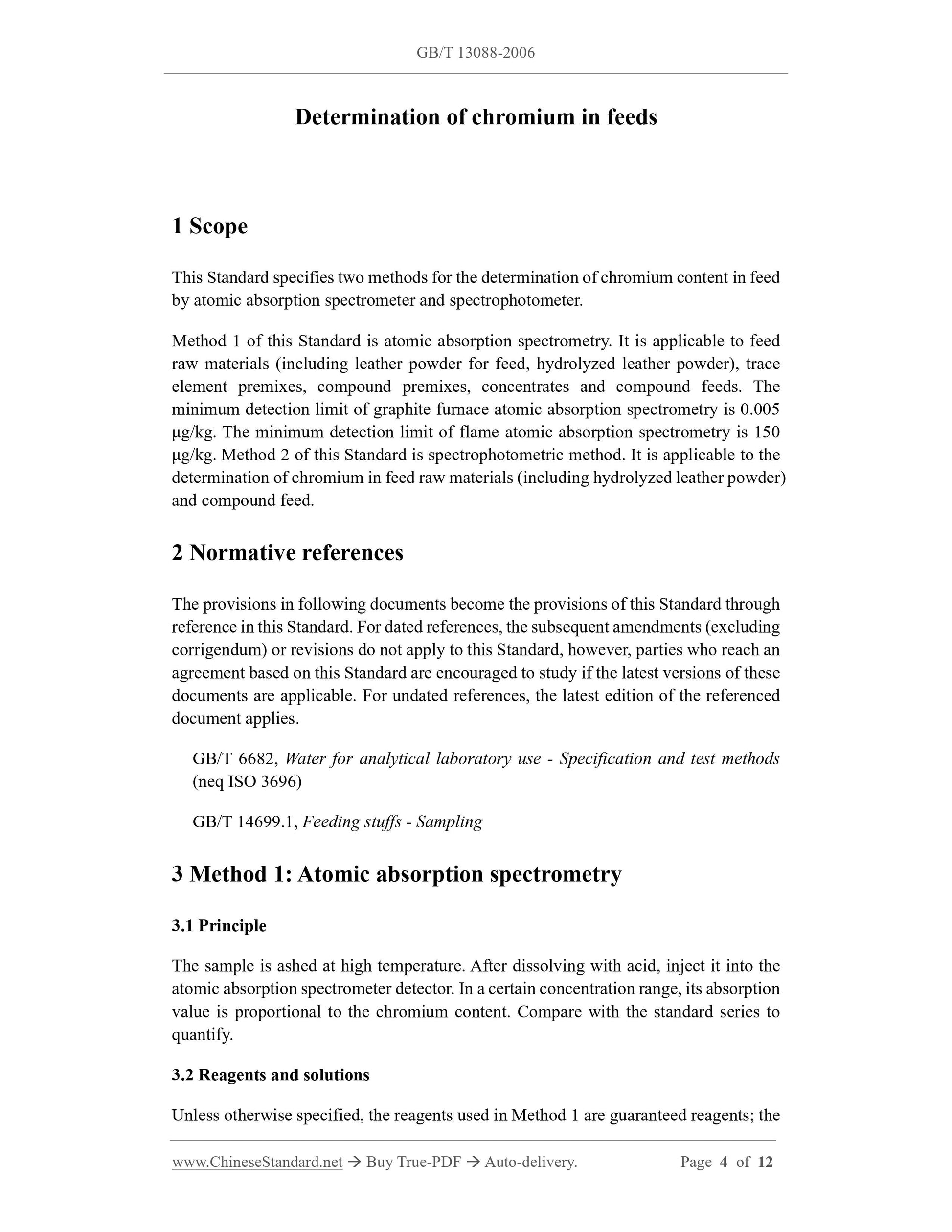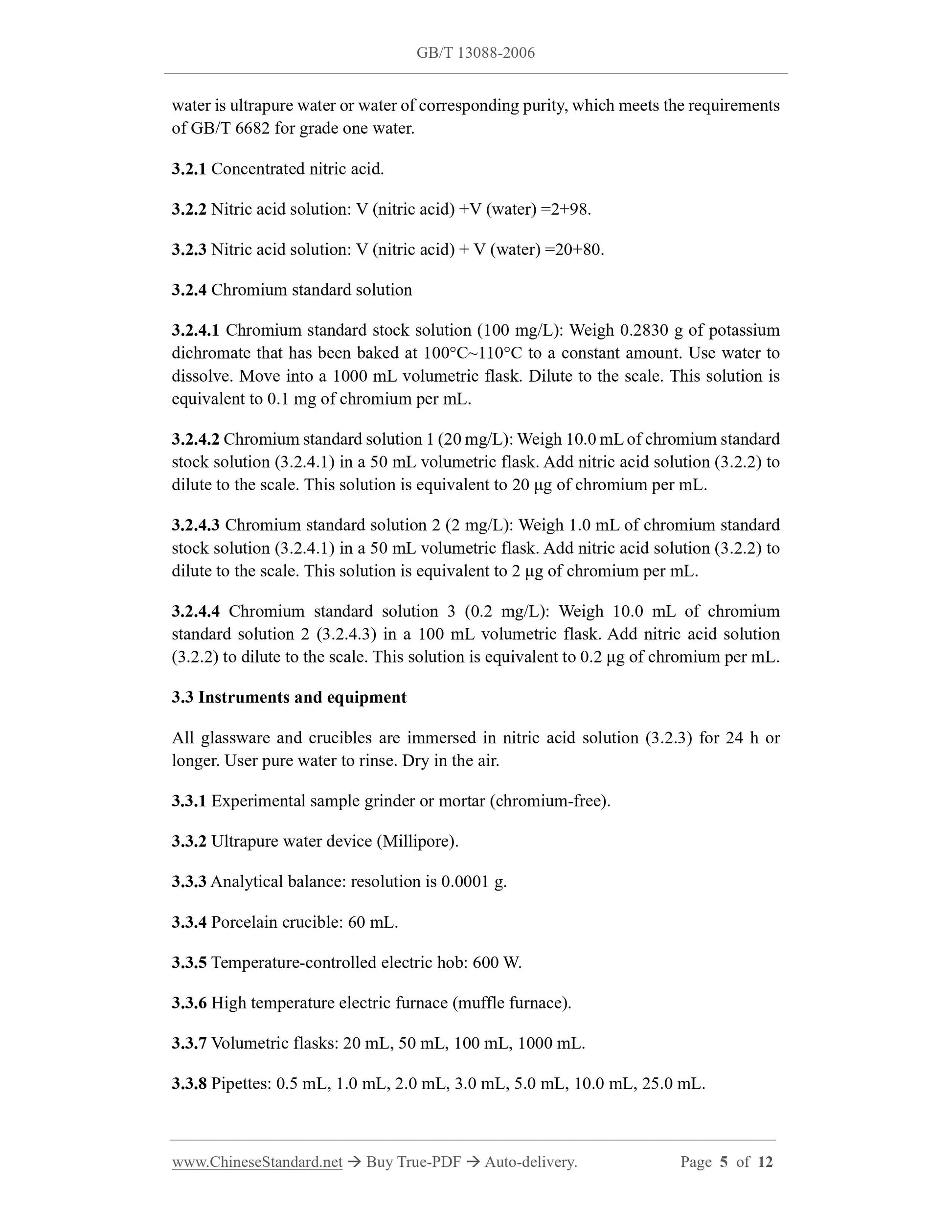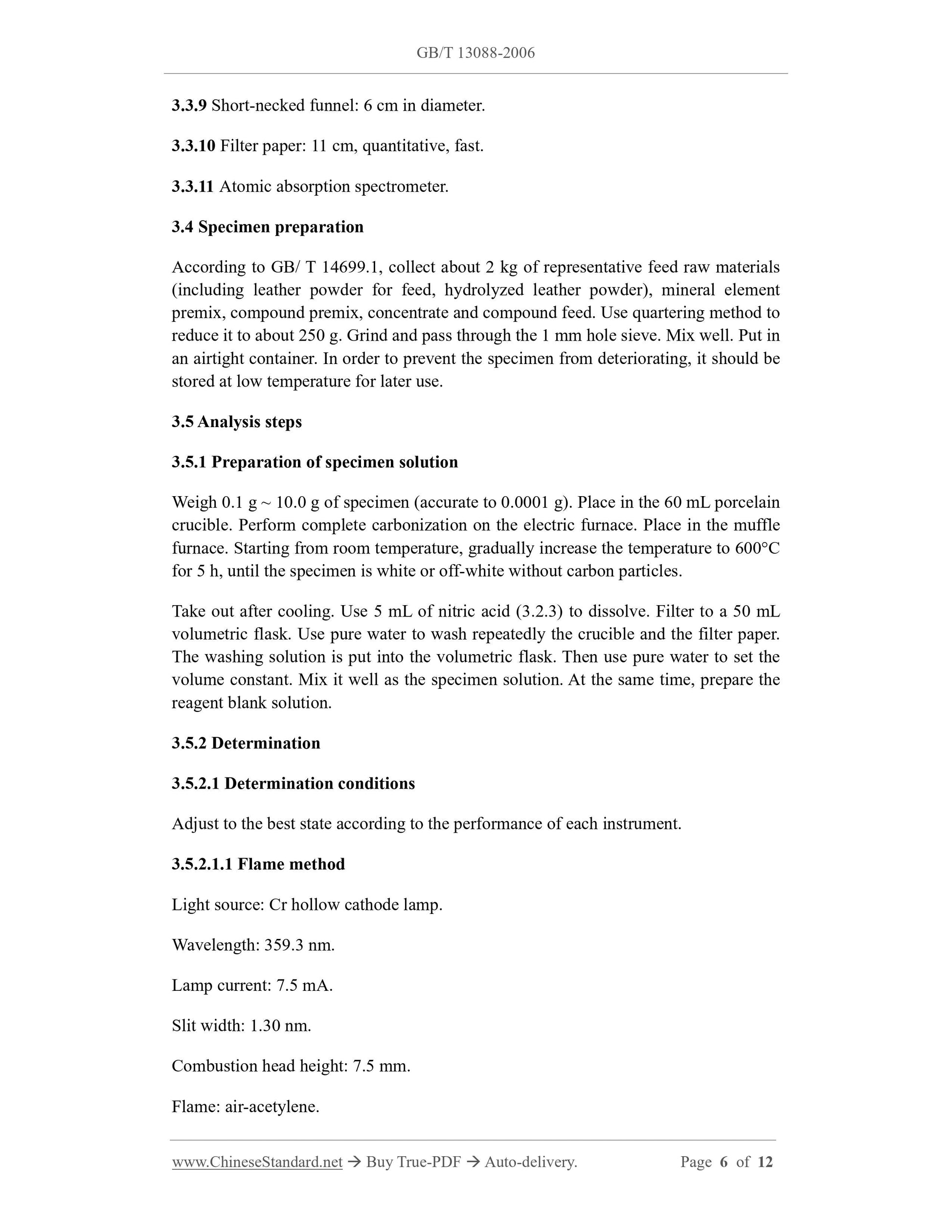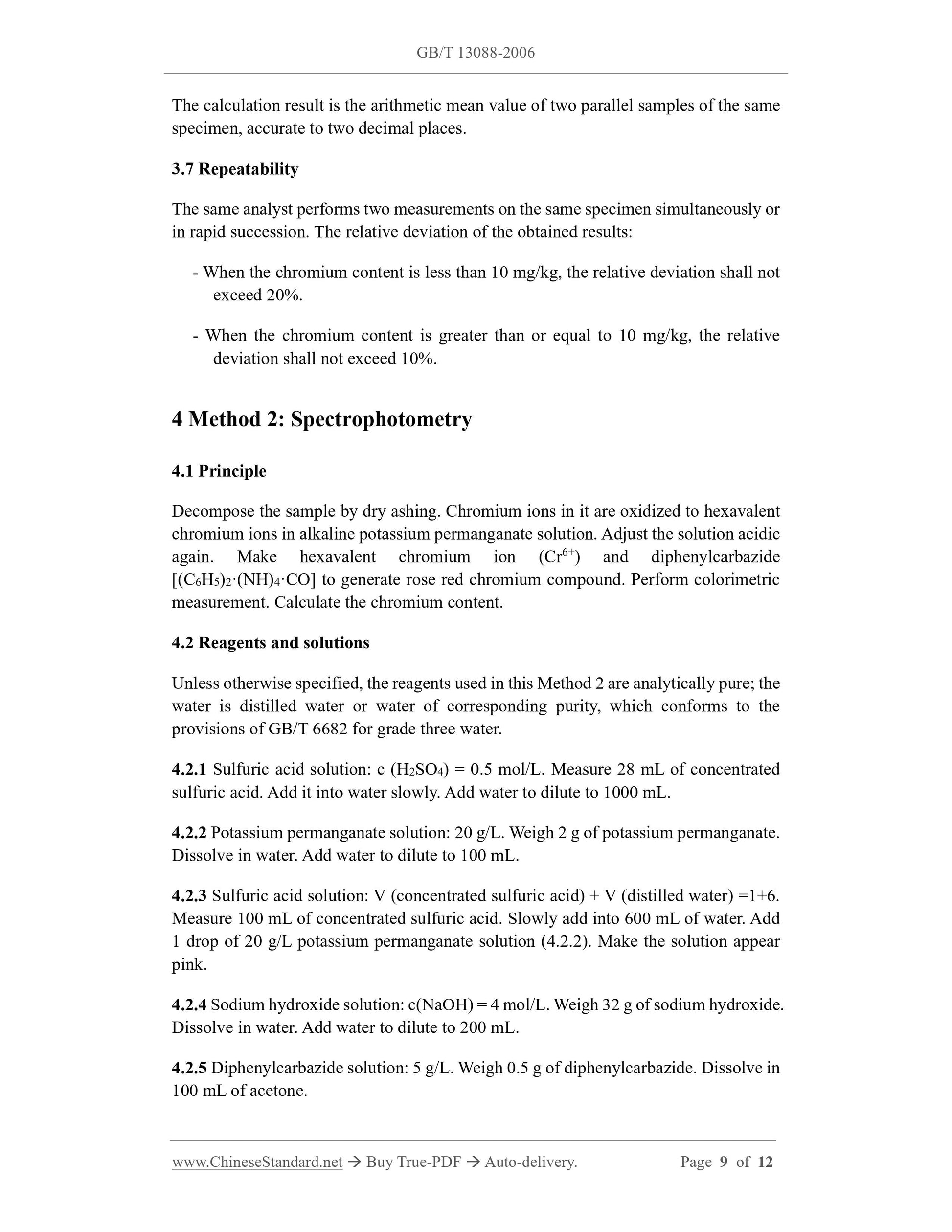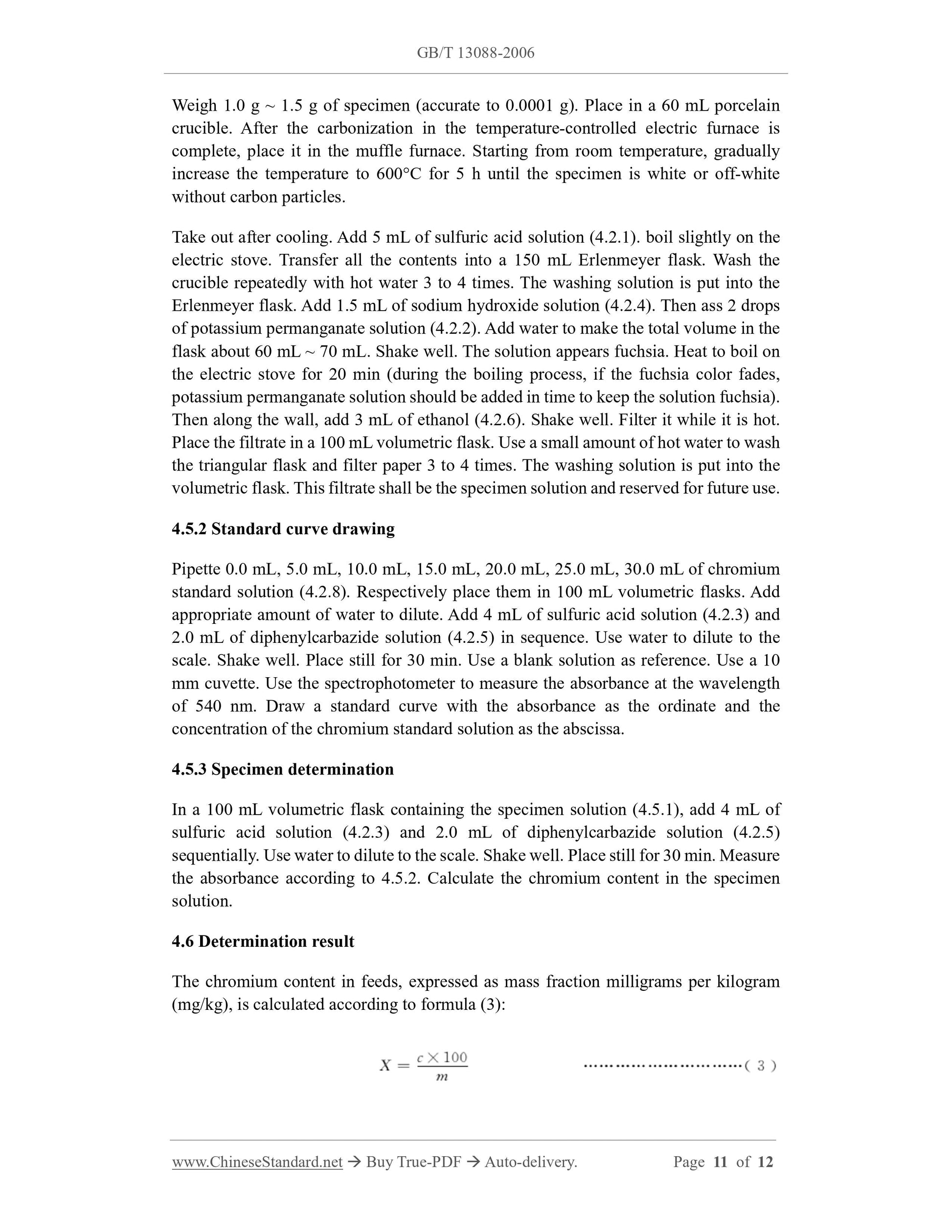1
/
of
7
www.ChineseStandard.us -- Field Test Asia Pte. Ltd.
GB/T 13088-2006 English PDF (GB/T13088-2006)
GB/T 13088-2006 English PDF (GB/T13088-2006)
Regular price
$70.00
Regular price
Sale price
$70.00
Unit price
/
per
Shipping calculated at checkout.
Couldn't load pickup availability
GB/T 13088-2006: Determination of chromium in feeds
Delivery: 9 seconds. Download (and Email) true-PDF + Invoice.Get Quotation: Click GB/T 13088-2006 (Self-service in 1-minute)
Newer / historical versions: GB/T 13088-2006
Preview True-PDF
Scope
This Standard specifies two methods for the determination of chromium content in feedby atomic absorption spectrometer and spectrophotometer.
Method 1 of this Standard is atomic absorption spectrometry. It is applicable to feed
raw materials (including leather powder for feed, hydrolyzed leather powder), trace
element premixes, compound premixes, concentrates and compound feeds. The
minimum detection limit of graphite furnace atomic absorption spectrometry is 0.005
μg/kg. The minimum detection limit of flame atomic absorption spectrometry is 150
μg/kg. Method 2 of this Standard is spectrophotometric method. It is applicable to the
determination of chromium in feed raw materials (including hydrolyzed leather powder)
and compound feed.
Basic Data
| Standard ID | GB/T 13088-2006 (GB/T13088-2006) |
| Description (Translated English) | Determination of chromium in feeds |
| Sector / Industry | National Standard (Recommended) |
| Classification of Chinese Standard | B46 |
| Classification of International Standard | 65.120 |
| Word Count Estimation | 8,891 |
| Date of Issue | 2006-06-09 |
| Date of Implementation | 2006-09-01 |
| Older Standard (superseded by this standard) | GB/T 13088-1991 |
| Quoted Standard | GB/T 6682; GB/T 14699.1 |
| Regulation (derived from) | China National Standard Approval Announcement 2006 No.8 (Total No.95) |
| Issuing agency(ies) | General Administration of Quality Supervision, Inspection and Quarantine of the People's Republic of China, Standardization Administration of the People's Republic of China |
| Summary | This standard specifies the use of two atomic absorption spectroscopy and chromium content in feed spectrophotometer. This standard method of atomic absorption spectrometry. Applicable to feed materials (including leather powder feed, hydrolyzed leather meal), trace element premix, premix, concentrates and feed, in which the graphite furnace atomic absorption spectrometry detection limit was 0. 005��g/kg, flame atomic absorption spectrometry detection limit was 150��g/kg. This standard method for the spectrophotometric method. Applicable to feed materials (including leather hydrolyzed flour) and with the determination of chromium in the feed. |
Share
